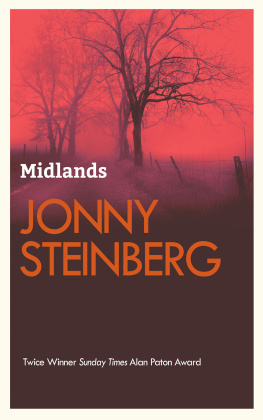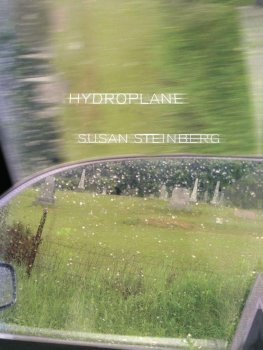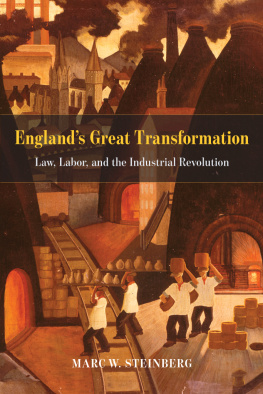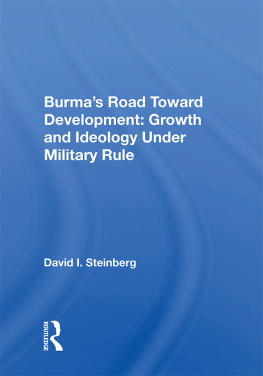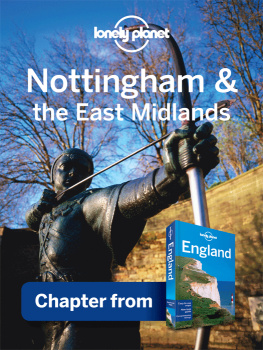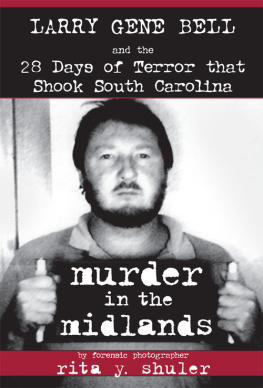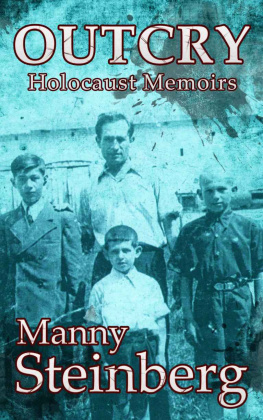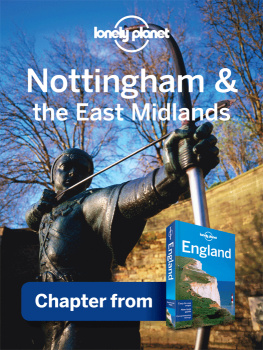About the author
Jonny Steinberg is a journalist and a scriptwriter. In the mid-1990s he was awarded a Rhodes Scholarship and studied at Oxford University where he graduated with a doctorate in political theory. He returned to South Africa in 1998 and worked for Business Day , writing on the constitutional court and the police. He left Business Day to write Midlands , which he did while based at the Centre for the Study of Violence and Reconciliation in Johannesburg. Steinberg is currently working on his second book.
Acknowledgements
Some time during the autumn of 1999, I phoned Graeme Simpson, executive director of the Centre for the Study of Violence and Reconciliation in Johannesburg.
Graeme, I said, I want to resign from my job and write a book about the murders of white farmers. Would you be prepared to give me an office and a telephone at the Centre?
I can do a lot more than that, Graeme replied, without a second thought. I can make you a full-time, salaried employee and we can raise some money to pay for your research and salary.
Im not sure if this book would ever have been written without that generosity. It has been a fraught and lonely enterprise in the best of circumstances; without the institutional and financial support I received, I would almost certainly have abandoned it.
Aside from Graeme Simpson, there are others at the Centre to thank. Writing about a murder is a dark business. Having the corridors filled with warm and witty people like Sasha Gear, Sbu Ntuli, Brandon Hamber, Polly Dewhirst and Pule Rampa made it that much easier.
Claire Wright went well beyond the call of a lawyers duty and found her client a publisher. I am extremely grateful for that.
Just when I had convinced myself that researching this book was impossible, Mark Shaw showed me a way into Langeni. Many thanks.
Several people read early drafts of the manuscript. I wish to thank four in particular. Carol Steinberg, had she chosen to live another life, would have made a wise and perspicacious literary editor. A couple of chapters in, she knew exactly how this book ought to be written, and told me about it. I hope I managed to carry out her advice.
Antony Altbekers sharp and quirky insights were as eccentric and refreshing as he is. He was unreservedly amused by the tics, hang-ups and angst which he spotted in the most unlikely places, and he got me to laugh along with him.
I met Ivan Vladislavic at the lowest of ebbs. Seems to me, he said, a little sarcastically, that you dont so much need editing as literary therapy. He gave me both they kind of came together in one package and they worked.
Mark Gevisser applied his considerable gifts as both a writer and a journalist to his reading of the manuscript. I fear there are times when I drove him insane with my incessant questions, fears and obsessions. Thanks for putting up with me.
I have been blessed with a wonderful publisher. Jonathan Balls enthusiasm for this book has been manna from heaven. And Francine Blum, whose competence in the production of books is surely unrivalled, has been a delight to work with. Many thanks to Owen Hendry for his fine copy editing.
Finally, I owe a debt of gratitude to funders. This book was supported in part by a grant from the Individual Project Fellowships Program of the Open Society Institute. Thank you to Gail Goodman, the former Individual Project Fellowships Program Manager, who was wonderful to me. I am particularly indebted to Mike Savage for his backing.
This book was also funded in part by the Harry Frank Guggenheim Foundation. Many thanks to the Foundations Karen Colvard, who gave warm support at a critical juncture.
All rights reserved.
No part of this publication may be reproduced or transmitted, in any form or by any means, without prior permission from the publisher or copyright holder.
Jonny Steinberg, 2002
The moral right of the author has been asserted.
Originally published in 2002 in trade paperback by
JONATHAN BALL PUBLISHERS
A division of Media24 (Pty) Ltd
PO Box 33977
Jeppestown
2043
Reprinted in 2005, 2007, 2008, 2009, 2011
Limited edition published in 2013, 2014, 2015 (twice),
2016 (twice), 2017 and 2018.
This paperback edition published in 2019
ISBN 978-1-86842-992-9
eBook ISBN 978-1-86842-405-4
Twitter: www.twitter.com/JonathanBallPub
Facebook: www.facebook.com/JonathanBallPublishers
Blog: http://jonathanball.bookslive.co.za/
Cover design by publicide

Eight
Drive out of Alanview along the regional artery, and after a short while you have climbed up the back of a steep precipice and are looking into the valley of the Gudla. It is the most powerful and unsettling scene in the southern midlands. A long line of steep hills stretches beyond the horizon, lending the scene a hyperbolic sense of depth. In the middle ground, the first line of hills on the other side of the valley forms the wall of a sharp, deep basin. Despite its depth, the valley is long and wide and disappears into the hills on the left. The Gudla river runs across the centre of the valley, and its amplitude has made the land on either side of it the finest irrigation fields in the area. From the top of the precipice, the vegetables are thickly matted rows of deep green, stretching luxuriously along the length of the valley. An irrigation system tosses streaks of water across the basin, and a black-and-white farmhouse on the far left stamps its authorship on the scene of orderly cultivation.
The pastoral serenity of the valley contrasts sharply with the wild power of the hills. Once you mark this contrast you realise why the scene is so unsettling. The cultivated fields appear fragile and precariously temporary. It is as if nature has lent humankind the use of the valley in a moment of uncharacteristic generosity; as if the wild bush that climbs the slopes of the hills could come down and take the basin back whenever it chooses.
A few kilometres from the valley of the Gudla, you pass a battered old signboard built into the bank on the side of the road. The sign says Ndunge, and it points down a poorly built gravel road that appears to go nowhere. Take that road, and the wilderness on either side of you hugs you close. For the first kilometre or two, you drive along the bottom of a steep ravine. The hills on both sides are tall and claustrophobic, their thick vegetation the same as the stuff through which the dirt track on Mitchells farm is carved. Drive on, and the hills begin to roll back, and the opening vista boasts traces of the power of the Gudla. The old Kriek properties are on the left, the invisible line of dagga plants running alongside you about 700 metres away.
Turn a sharp corner and you are suddenly confronted by a short, steep hill. Once you reach the summit, you are looking down into Langeni. It is beautiful. Through my city eyes, it is too beautiful; there is something banal in its perfect rusticity. Clusters of graceful mud huts, their whitewashed walls crisp and fresh. Gently marked out vegetable patches, rows of healthy mealies growing out of their confines. In the middle distance, a group of women balance clay pots on their heads, making their way up from the bottom of the valley. A dog wags its tail as it trots at their heels. All of this is quietly carved into the grace of the most dramatic landscape I have ever seen.
Call it a cultural village, bus in German and Japanese tourists to talk patronisingly to the Cube and Mashabana women about their maize-grinding implements and their colourful anklets, and the tenants of Langeni could earn a good living.

